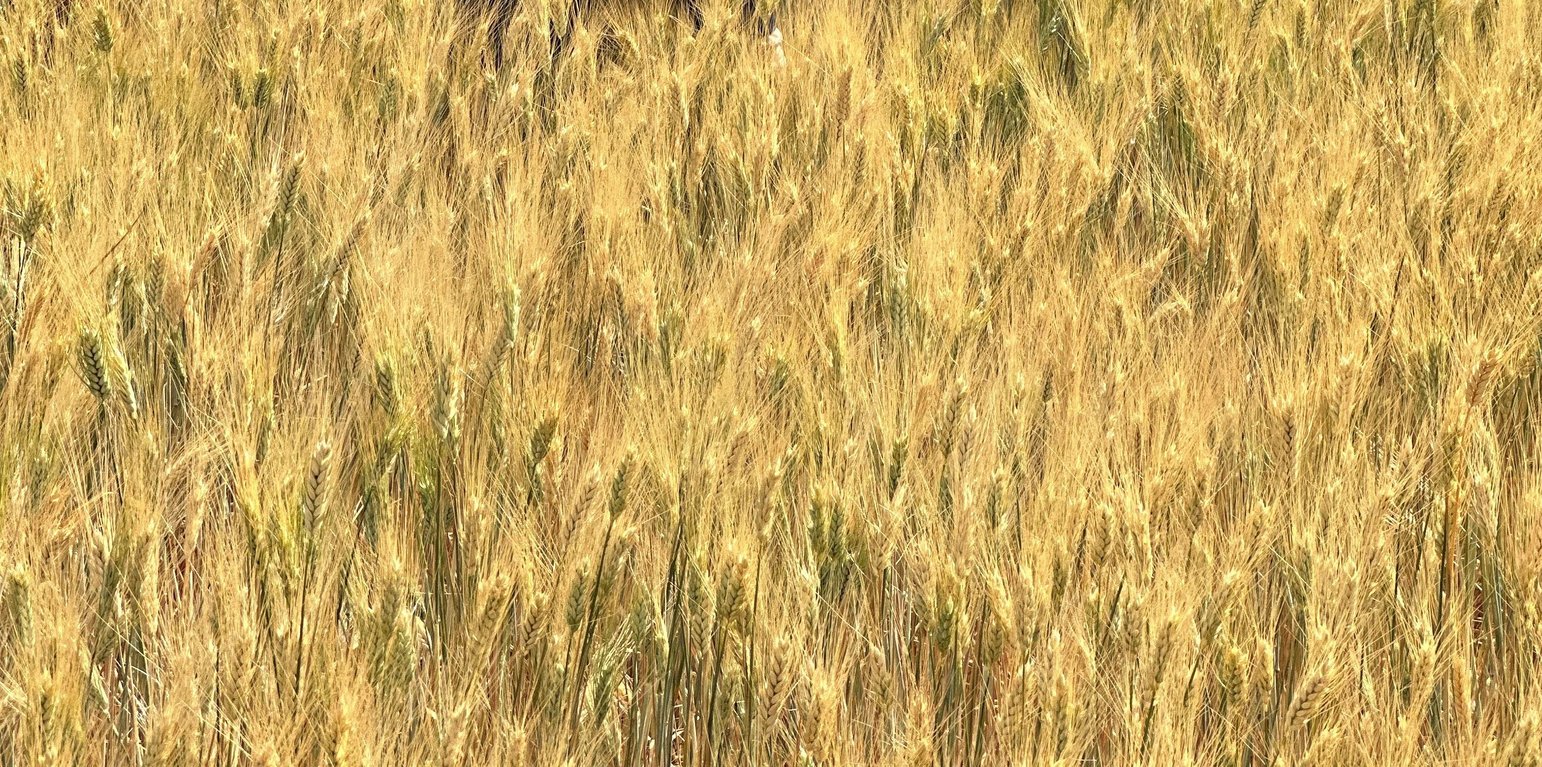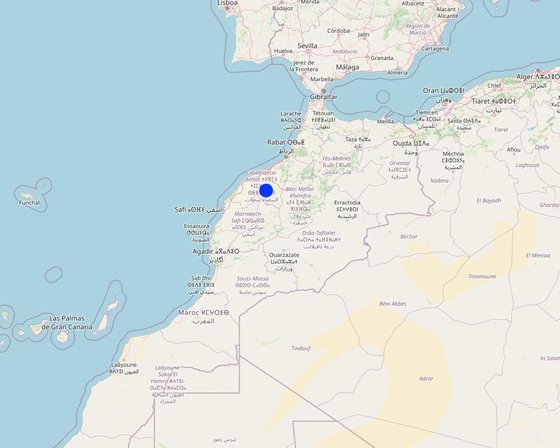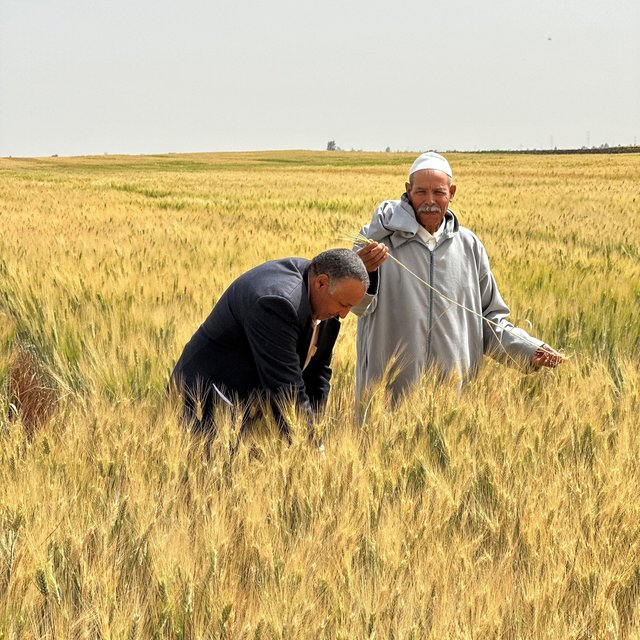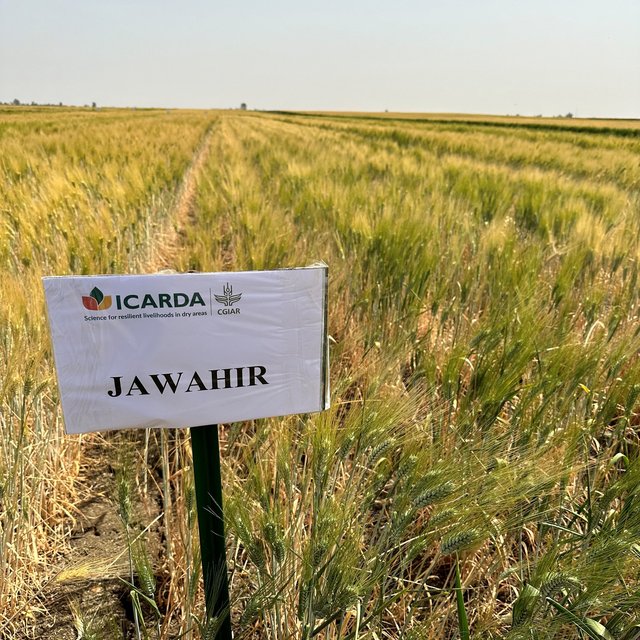



Climate change exacerbates the difficulties faced by farmers in dry areas by amplifying drought conditions. Limited water availability and higher temperatures disrupt crop growth and heighten the vulnerability of plants to pests such as the Hessian fly (Mayetiola destructor). This leads to increased risks of crop damage, reduced yields, and economic losses in these regions.
Genetically improving crop varieties can help overcome these issues by making crops more resilient. An international collaboration led by the International Center of Agricultural Research in Dry Areas (ICARDA-Morocco) has delivered six ground-breaking new durum wheat and barley varieties tolerant to increasingly severe droughts ravaging the region. Improvement is performed through Molecular Breeding which consists of markers to select specific traits and conventional phenotypic.
This case study revolves around an improved durum wheat variety named Jawahir. The main advantages of this variety are:
•Cost savings: Jawahir's suitability for zero tillage helps to eliminate the need for ploughing, reducing the associated costs for farmers.
•Disease and pest resistance: Jawahir's resistance to diseases and pests, including the Hessian fly, minimizes the expenses related to fungicides and insecticides.
•Higher grain yield: Compared to competing varieties (like Karim and Kanakis), Jawahir can yield an additional 700 kilograms per hectare under dry conditions, increasing farmers' productivity and potential income.
•Enhanced straw yield: Jawahir also produces an additional 500 kilograms of straw compared to competing varieties during drought, providing additional feed for fodder and for mulching under conservation agriculture systems.
Jawahir was introduced in the Settat-Safi region (Morocco) where annual precipitation is between 300 and 400 mm. While cultivation practices may vary, it is recommended to include Jawahir in a conservation agriculture (zero/ minimum till) system. Crop management includes machine seeding in November at a rate of 200 kg per hectare corresponding to approximately 300 plants per square meter. Fertilizer application consists of manually applying 200 kg of NPK (15:20:15) in November and 100 kg of urea in February. Herbicide application of 1 litre is suggested in February. Harvesting takes place in June using a combine harvester, and during July and August, the stubble is left for grazing. Following this crop management system, the costs per hectare are estimated to be around 2610 Moroccan Dirham (about 261 USD) per hectare.
The direct gross income from Jawahir, based on grain yield, is approximately 1,120 USD per hectare, based on a yield of 3,200 kilograms and a selling price of 35 USD per 100 kilograms. The additional gross income from straw yield is around 1,100 USD per hectare, assuming a yield of 5,500 kilograms and a price of 20 USD per 100 kilograms. This results in a total direct gross income of 2,220 USD per hectare.
However, if processed into couscous for human consumption, Jawahir's higher semolina yield (i.e. more kilograms of semolina per kilogram of grain milled) and better semolina color means an extra gross income of 4,560 USD per hectare. Additionally, when the straw is used for animal fattening, the extra output per hectare is around 900 kilograms of lamb meat (based on a conversion rate of 6 kilograms of feed to 1 kilogram of meat). Then the total extra gross income from production of meat is 5,500 USD per hectare.
Including both direct and indirect income, Jawahir provides a total gross income of approximately 12,280 USD per hectare from grain, straw, couscous, and animal fattening.
In conclusion, enhanced crop varieties like Jawahir offer increased resilience to the challenges posed by climate change in dry areas. These varieties provide benefits such as cost savings, disease and pest resistance, and improved yields. By adopting these varieties, farmers can enhance their agricultural productivity and mitigate the impacts of climate change on their livelihoods.
Acknowledgement: ICARDA’s work on breeding is supported by the Accelerated Breeding Initiative of the CGIAR and The Crop Trust. The variety release was through INRA Morocco.

ສະຖານທີ່: Settat-Safi, ມໍລອກໂກ
ຈໍານວນ ພື້ນທີ່ ທີ່ໃຊ້ ເຕັກໂນໂລຢີ ທີ່ໄດ້ວິເຄາະ: 2-10 ພຶ້ນທີ່
ການແຜ່ກະຈາຍຂອງເຕັກໂນໂລຢີ: ແຜ່ຂະຫຍາຍຢ່າງໄວວາໃນພື້ນທີ່ (approx. 0.1-1 ກມ 2)
ຢູ່ໃນເຂດປ່າສະຫງວນທີ່ບໍ?: ບໍ່ແມ່ນ
ວັນທີຂອງການປະຕິບັດ: 2022
ປະເພດຂອງການນໍາສະເໜີ





| ລະບຸ ປັດໃຈ ນໍາເຂົ້າ ໃນການຜະລີດ | ຫົວໜ່ວຍ | ປະລິມານ | ຕົ້ນທຶນ ຕໍ່ຫົວໜ່ວຍ (Morrocan Dirham) | ຕົ້ນທຶນທັງໝົດ ຂອງປັດໃຈຂາເຂົ້າ ໃນການຜະລິດ (Morrocan Dirham) | % ຂອງຕົ້ນທຶນທັງໝົດ ທີ່ຜູ້ນໍາໃຊ້ທີ່ດິນ ໃຊ້ຈ່າຍເອງ |
| ແຮງງານ | |||||
| Seeding | Person-day | 2.0 | 80.0 | 160.0 | |
| Fertilizer application | Person-day | 4.0 | 80.0 | 320.0 | |
| Herbicide application | Person-day | 2.0 | 80.0 | 160.0 | |
| Harvesting | Person-day | 2.0 | 80.0 | 160.0 | |
| ອຸປະກອນ | |||||
| Seeder | Machine-hour | 2.0 | 100.0 | 200.0 | |
| Combine | Machine-hour | 2.0 | 200.0 | 400.0 | |
| ວັດສະດຸໃນການປູກ | |||||
| Jawahir seed | 100 Kilogram | 2.0 | 130.0 | 260.0 | |
| ຝຸ່ນ ແລະ ຢາຊີວະພາບ | |||||
| First fertilizer: NPK (15:20:15) | 100 Kilogram | 2.0 | 250.0 | 500.0 | |
| Second fertilizer: Urea | 100 Kilogram | 1.0 | 200.0 | 200.0 | |
| Herbicide | Liter | 1.0 | 250.0 | 250.0 | |
| ຕົ້ນທຶນທັງໝົດ ທີ່ໃຊ້ໃນການບໍາລຸງຮັກສາ ເຕັກໂນໂລຢີ | 2'610.0 | ||||
| ຄ່າໃຊ້ຈ່າຍທັງໝົດ ສຳລັບການບົວລະບັດຮກສາເຕັກໂນໂລຢີ ເປັນສະກຸນເງີນໂດລາ | 261.0 | ||||
When used in Conservation Agriculture
When used in Conservation Agriculture